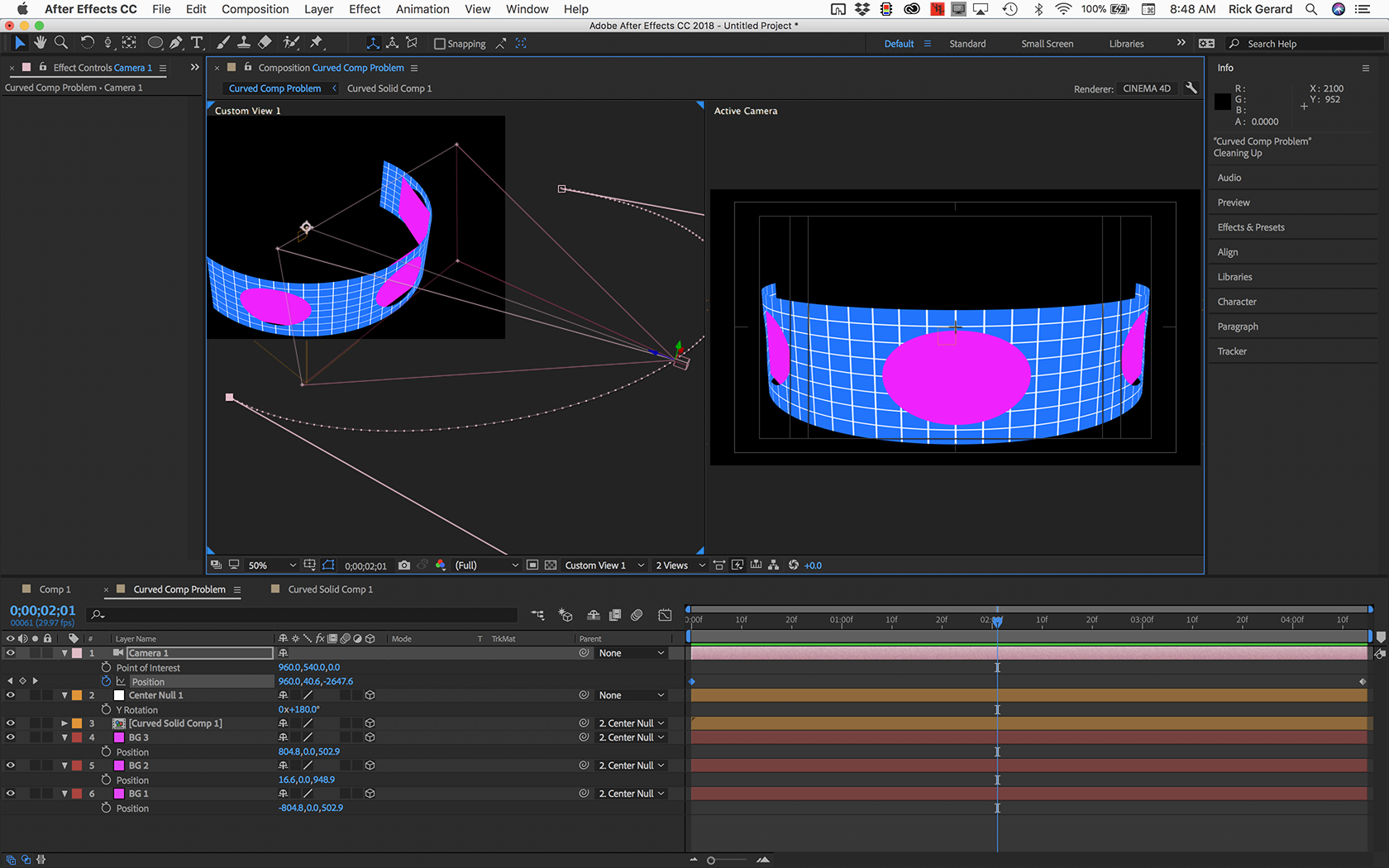- Home
- After Effects
- Discussions
- Re: Is it possible to hide the back of a layer whe...
- Re: Is it possible to hide the back of a layer whe...
Copy link to clipboard
Copied
Show me the way ![]()
 1 Correct answer
1 Correct answer
Long answer: No. That would require a specific shader in the rendering code itself to make this determination.
Mylenium
Copy link to clipboard
Copied
Practically that makes no sense to me. You can add an expression that looks at the layers relationship to the camera and sets opacity to zero with the layer is not facing the camera but there is no way with one layer to figure out which part of a layer is front and which is back when you bend it.
The only option I can think of off the top of my head would be to duplicate the layer offset the layer farthest from the camera by one pixel, change the color to something like pure red, turn off accepts lights and then nest the comp in a Classic 3D comp so you can add effects and then use keylight to make the red parts transparent.
It would help if you explained what you are trying to accomplish with some kind of illustration.
Copy link to clipboard
Copied
I have a rotating curved image with an alpha. As a result of the transparent holes, you can see the back of the image as it rotated around, which was not my desired effect (i needed to see the background instead). Would be nice to have an option to turn that off or on. No matter though as i've worked around it using keylight- replaced the alpha with a green solid layer.
Copy link to clipboard
Copied
As you probably discovered, it's just a matter of arranging things properly in 3D space. I created something similar to your description by creating a 2000 x 500 comp and filling it with a solid that had 3 masks set to subtract to use as my background. A grid was applied to the solid, the masks were added as compositing options to limit the grid to just the visible pixels, then the masks were all duplicated to return the holes to the solid. The grid was added just to make it easier to see what was going on with I curved the layer later.
A second comp was created at standard HD and using the C4D renderer. I added a 600 X 400 solid to the comp to use as placeholders for the images. I duplicated that solid twice so I had 3 layers and made them 3D.
I added a center null to the timeline, the background 2000 X 500 comp, and a camera to the timeline.
Curvature was set to 100% for background layer (the nested comp) divisions set to 256 to make it smooth, and it was parented to the center null. All 3 placeholder layers 75were moved about 475 in X to put them just in front of the middle hole in the curved background layer. The middle placeholder layer and the background layer were parented to the center null.
The center null was then rotated to line up the next placeholder, it was parented to the center null, then the null was rotated in the opposite direction to line up the remaining hole and placeholder. The last placeholder was then parented to the null so the null became the center of the stage. I rotated it 180º to put the curved layer in between the placeholders and the camera and then set a couple of keyframes for the camera and adjusted the bezier handles. The layers were all arranged in AE's 3D world and the camera move had been animated in a little less than it took to write this post. All that is left is to pick, crop and size the 3 images to be used as placeholders and if needed an image for the background to replace the background solid, and finalize the lighting and color grading for the project.

Copy link to clipboard
Copied
Long answer: No. That would require a specific shader in the rendering code itself to make this determination.
Mylenium
Find more inspiration, events, and resources on the new Adobe Community
Explore Now